The Day of the Dead is a meaningful celebration that honours deceased loved ones through altars and symbols. Explore the significance of altars, the cultural symbols like marigolds and sugar skulls, and the ways memories are captured and preserved. This tradition reflects a blend of indigenous and Spanish influences, emphasising the connection between generations. Discover how to create a personalised altar that embodies love and remembrance.
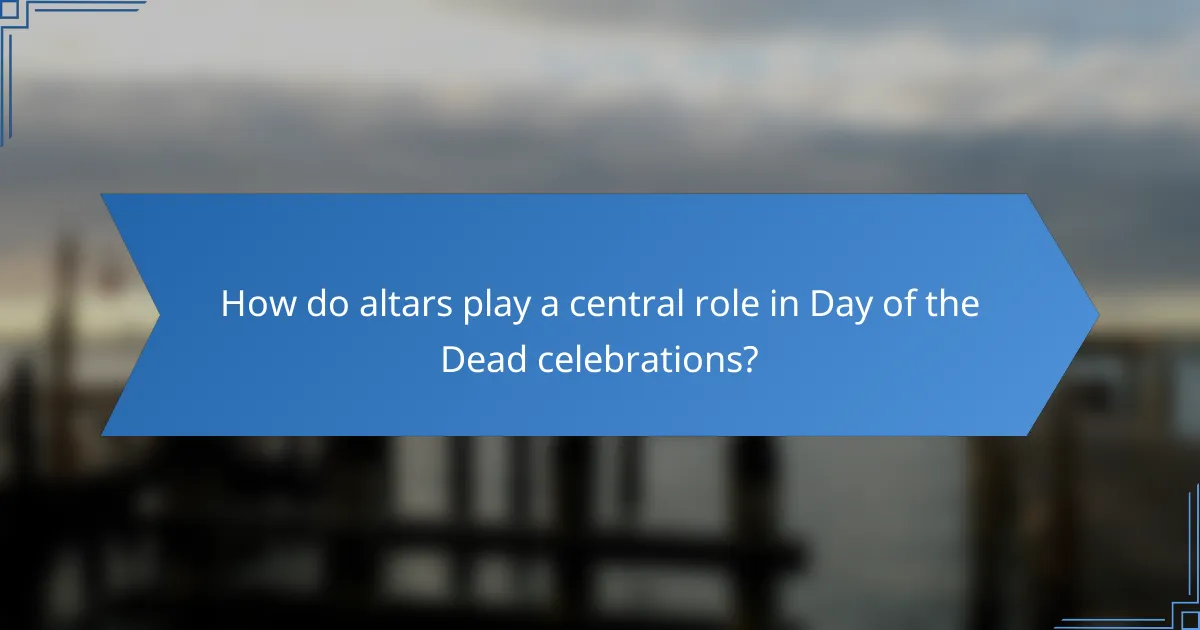
How do altars play a central role in Day of the Dead celebrations?
Altars are central to Day of the Dead celebrations as they honour deceased loved ones. They serve as a focal point for remembrance, featuring photographs, favourite foods, and personal items of the departed. The vibrant decorations reflect the unique attributes of each individual, creating a personalised tribute. Altars also incorporate symbolic elements like marigolds and candles, guiding spirits back to the living world. This practice embodies cultural beliefs about life, death, and memory, fostering connections between generations.
What elements are commonly included on an altar?
Common elements on a Day of the Dead altar include photographs, marigolds, candles, sugar skulls, food offerings, and papel picado. These items honour deceased loved ones and celebrate their memory. Each element serves a unique purpose, such as guiding spirits or providing nourishment.
How do altars vary across different regions?
Altars for the Day of the Dead vary significantly across regions, reflecting local customs and cultural influences. In Mexico, altars often feature multiple tiers and are adorned with marigolds, photographs, and favourite foods of the deceased. In Guatemala, altars may include colourful kites and traditional foods, emphasising a connection to the sky. In parts of the United States, altars can blend Mexican traditions with contemporary elements, showcasing a diverse representation of heritage. Each region’s unique attributes create distinct experiences that honour the memory of loved ones.
Why are personal items significant on altars?
Personal items are significant on altars because they create a personal connection to the deceased. These items evoke memories and honour the unique life experiences of those who have passed. Incorporating personal belongings, such as photographs or favourite objects, allows families to celebrate the individuality of their loved ones. This practice reflects the cultural belief in maintaining a bond with the departed, emphasising remembrance and love.
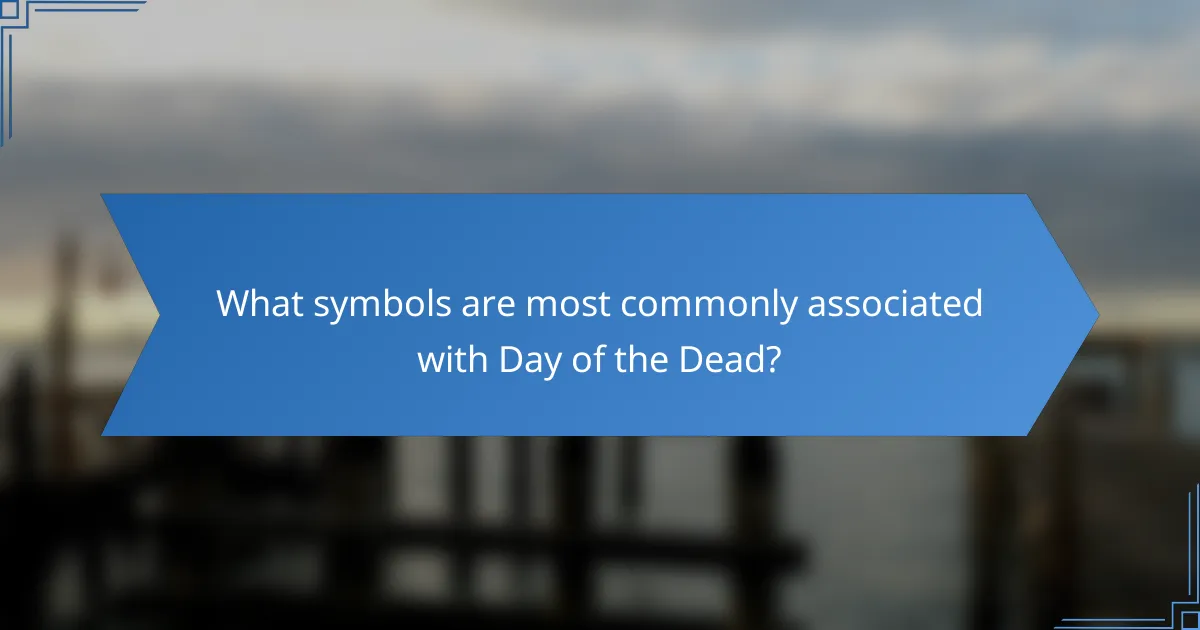
What symbols are most commonly associated with Day of the Dead?
The most commonly associated symbols with Day of the Dead include skulls, marigolds, sugar skulls, and papel picado. These symbols represent the celebration of life and honour deceased loved ones. Skulls, or calaveras, symbolise the cycle of life and death. Marigolds guide spirits to altars with their vibrant colour and scent. Sugar skulls are decorative and personalised, representing the deceased. Papel picado adds a festive touch, symbolising the fragility of life. Each symbol plays a significant role in the altars and festivities, enriching the cultural experience.
How do the meanings of symbols differ by culture?
The meanings of symbols can vary significantly across cultures. In the context of the Day of the Dead, symbols like skulls and marigolds carry distinct meanings in Mexican culture, representing death as a part of life and honouring ancestors. In contrast, similar symbols may represent fear or mourning in other cultures. The unique attribute of the Day of the Dead is its celebration of life through remembrance, which is rare compared to other cultural interpretations of death. Understanding these differences enhances appreciation for diverse cultural expressions and practices.
Which symbols are unique to specific communities?
Unique symbols associated with the Day of the Dead include the skull, known as calavera, and marigold flowers, representing the connection to the afterlife. Additionally, papel picado, intricately cut paper, symbolises the fragility of life. Each community may incorporate specific symbols reflecting local traditions, such as unique altars or offerings. These symbols serve to honour deceased loved ones and celebrate their lives.
What are the rare symbols that may appear on altars?
Rare symbols that may appear on altars during the Day of the Dead include the owl, representing wisdom and the afterlife, and the butterfly, symbolising transformation and the souls of the deceased. Other rare symbols are the cross, indicating faith, and the marigold flower, which guides spirits home. Each symbol carries unique significance, enriching the altar’s meaning.
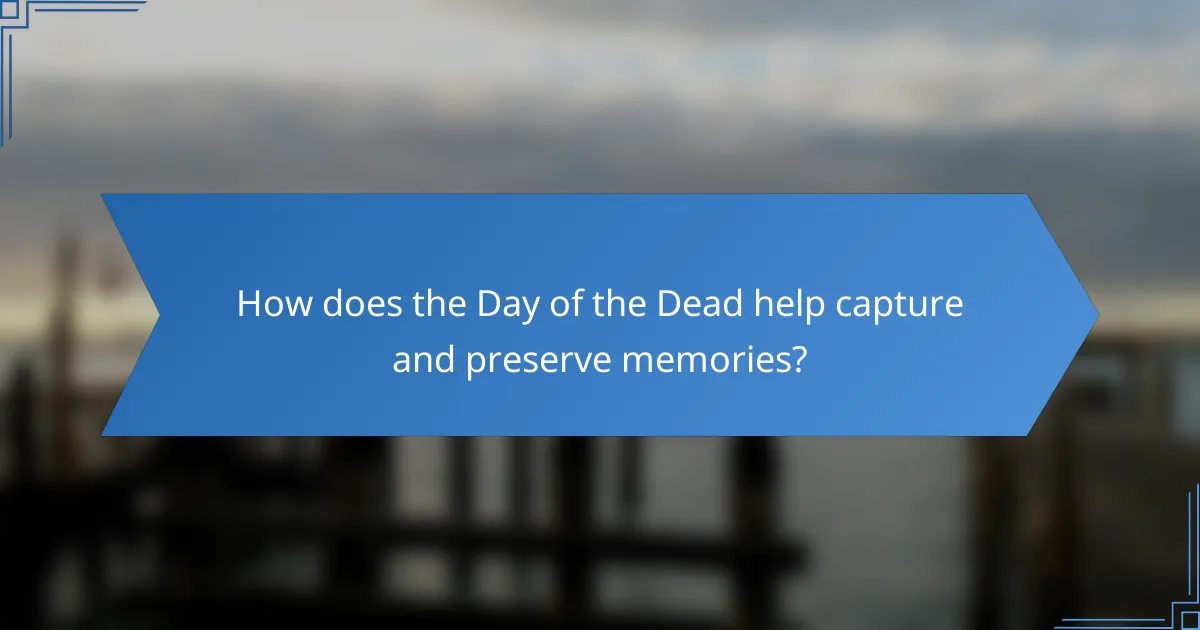
How does the Day of the Dead help capture and preserve memories?
The Day of the Dead captures and preserves memories by creating a meaningful connection between the living and the deceased. Altars, known as ofrendas, are central to this tradition, featuring photographs, favourite foods, and personal items of the departed. These elements serve as vivid reminders of shared experiences and familial bonds.
The use of symbols, such as marigolds and sugar skulls, enhances this connection. Marigolds guide spirits back to the living world, while sugar skulls celebrate the uniqueness of each individual. Together, these practices foster a collective memory, allowing families to honour their ancestors and keep their legacies alive.
Additionally, storytelling during the celebrations reinforces memories. Families share anecdotes, ensuring that the lives of their loved ones are remembered and cherished. This cultural practice not only preserves memories but also strengthens community ties, making the Day of the Dead a vital aspect of cultural heritage.
What practices enhance memory sharing during the celebration?
Creating meaningful memory sharing during the Day of the Dead celebration involves specific practices. Engaging storytelling, sharing personal anecdotes, and using visual aids enhance connections.
Setting up altars with photographs and mementos invites reflection and conversation. Group activities, such as crafting or cooking traditional foods, foster collaboration and shared experiences.
Incorporating music and dance can evoke emotions and memories, enriching the collective remembrance. Finally, encouraging open dialogue about loved ones creates a supportive environment for sharing stories.
How do families personalize their remembrance activities?
Families personalize their remembrance activities by creating unique altars, incorporating personal symbols, and sharing memories. Altars often feature photographs and favourite items of the deceased, reflecting individual relationships. Symbols such as marigolds and sugar skulls represent life and death, adding cultural significance. Capturing memories through storytelling and shared experiences reinforces family bonds. Each family’s approach varies, making their remembrance activities deeply personal and meaningful.
What role does storytelling play in memory preservation?
Storytelling is vital for memory preservation during the Day of the Dead. It connects individuals to their ancestors, ensuring their legacies endure. Through narratives shared at altars, families evoke emotions and maintain cultural traditions. This practice emphasises the unique attribute of storytelling as a bridge between the living and the deceased, reinforcing collective memory. Engaging stories transform personal memories into shared experiences, enriching the celebration.
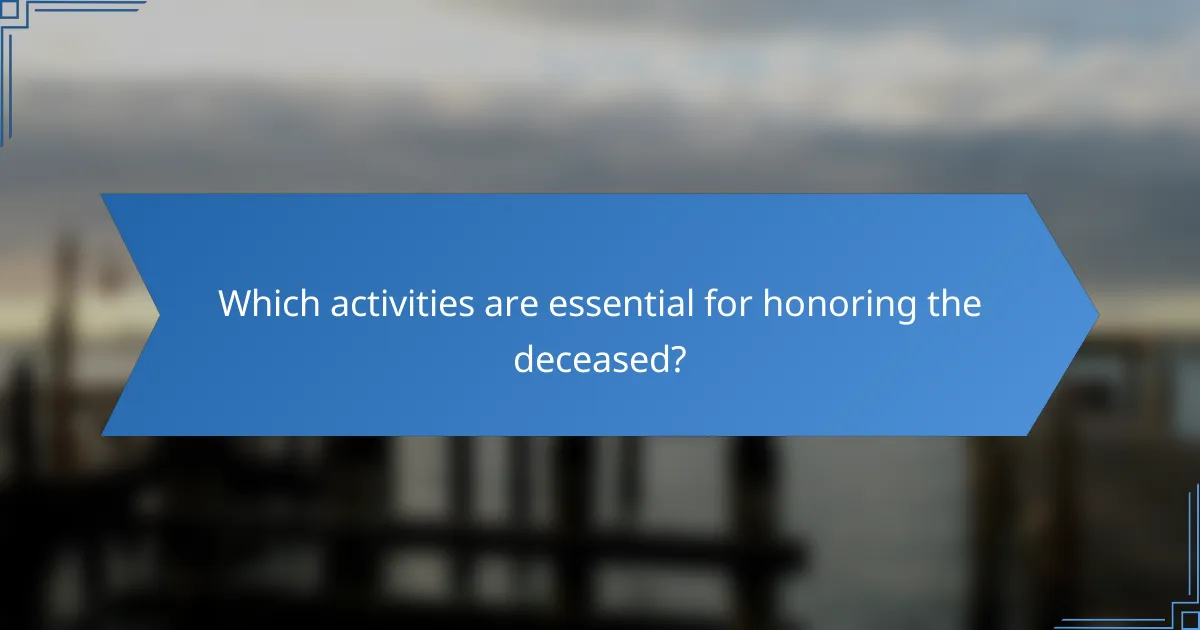
Which activities are essential for honoring the deceased?
Essential activities for honouring the deceased during the Day of the Dead include creating altars, offering food, and sharing memories. Altars, or ofrendas, serve as a focal point for remembrance, adorned with photos, favourite items, and marigolds. Offering traditional foods, such as pan de muerto, symbolises sustenance for the spirits. Sharing stories and memories fosters connection and keeps the legacy alive. These practices emphasise respect and love for those who have passed, enriching the cultural significance of the celebration.
How do food offerings contribute to the celebration?
Food offerings play a crucial role in the Day of the Dead celebration by honouring deceased loved ones and inviting their spirits back to the living world. These offerings, known as ofrendas, typically include the deceased’s favourite foods, drinks, and other personal items. This practice symbolises the connection between life and death, fostering remembrance and gratitude.
Traditional foods like pan de muerto, sugar skulls, and favourite dishes reflect the unique attributes of individual spirits, making each altar a personalised tribute. The vibrant colours and rich flavours of these offerings not only celebrate life but also create a festive atmosphere, reinforcing cultural identity and community bonds.
In summary, food offerings are integral to the Day of the Dead, serving both as a means of remembrance and as a way to celebrate the lives of those who have passed.
What are the traditional forms of entertainment during the festivities?
Traditional forms of entertainment during the Day of the Dead festivities include music, dance, and storytelling. These elements celebrate the lives of deceased loved ones and create a vibrant atmosphere.
Music, often featuring mariachi bands, plays a central role, enhancing the festive mood. Traditional dances, such as the Danza de los Viejitos, showcase cultural heritage and community participation. Storytelling, particularly about the deceased, fosters remembrance and connection among family members.
These activities not only entertain but also serve to honour and preserve cultural traditions during this significant celebration.
How do different cultures incorporate music and dance?
Different cultures incorporate music and dance as vital expressions during the Day of the Dead, enhancing the celebration. In Mexico, traditional music and dance reflect joy and remembrance, with mariachis playing lively tunes. Altars feature symbols like sugar skulls and marigolds, creating a vibrant atmosphere. Unique attributes of this celebration include the blending of indigenous and Spanish influences, showcasing diverse cultural elements. Rituals often involve community participation, reinforcing social bonds through shared music and dance experiences.
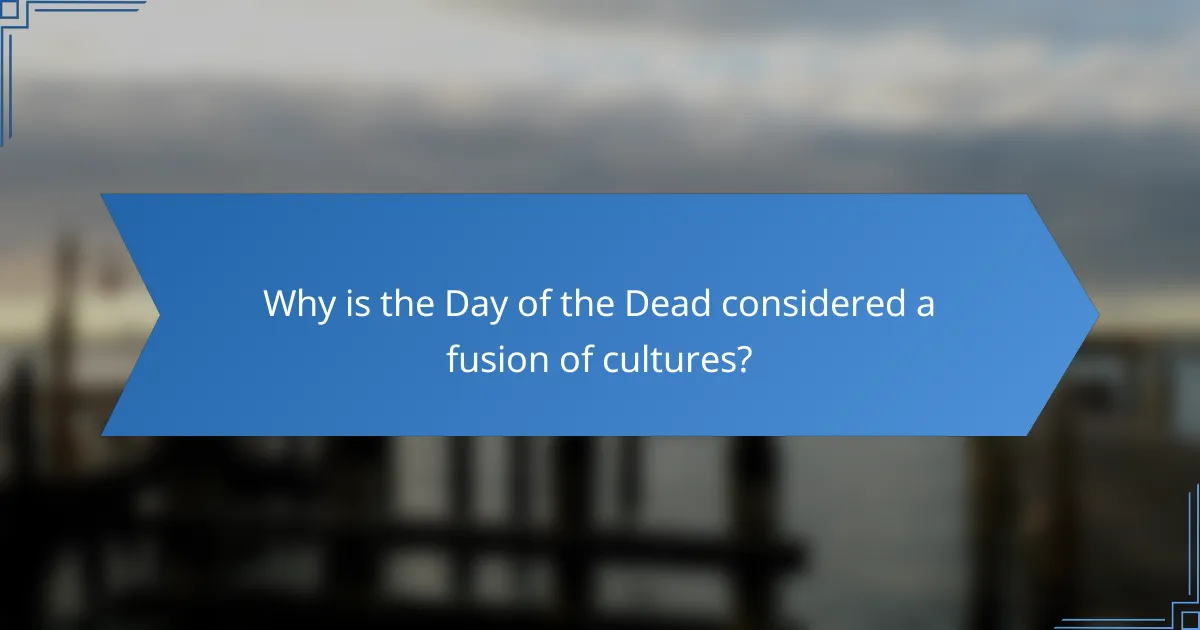
Why is the Day of the Dead considered a fusion of cultures?
The Day of the Dead is considered a fusion of cultures due to its blend of indigenous Mexican traditions and Spanish colonial influences. This celebration honours deceased loved ones with altars, offerings, and symbols that reflect both pre-Hispanic and Catholic beliefs. For instance, the use of marigolds and sugar skulls showcases indigenous practices, while the incorporation of prayers and Christian imagery highlights Spanish heritage. This cultural amalgamation creates a unique and vibrant observance that emphasises remembrance and connection across generations.
What historical influences shaped the modern celebration?
The modern celebration of the Day of the Dead is shaped by indigenous traditions and Spanish colonial influences. Pre-Columbian cultures honoured deceased ancestors, integrating rituals with vibrant altars and offerings. The Spanish introduced Catholic elements, blending them with indigenous practices. This fusion created a unique celebration that emphasises remembrance and connection with the departed. Today, the holiday showcases symbols like skulls and marigolds, reflecting both its historical roots and contemporary significance.
How do indigenous practices intersect with contemporary customs?
Indigenous practices and contemporary customs intersect through the celebration of the Day of the Dead, blending traditional rituals with modern elements. This fusion manifests in altars, symbols, and the act of capturing memories, creating a vibrant cultural tapestry.
Altars, or ofrendas, honour deceased loved ones, incorporating both ancestral items and contemporary tributes. Traditional symbols, like marigolds and sugar skulls, coexist with modern interpretations, reflecting evolving cultural expressions.
The intersection also includes community gatherings that blend traditional music and dance with contemporary festivities, fostering a sense of connection across generations. This dynamic exchange enriches both indigenous practices and contemporary customs, ensuring their relevance and continuity.
Which aspects of the celebration reflect global influences?
The Day of the Dead celebration reflects global influences through its incorporation of diverse cultural elements. Elements such as sugar skulls and marigolds show a blend of indigenous and Spanish traditions. The use of altars also showcases a mix of personal and communal remembrance practices, influenced by both Catholic and pre-Hispanic beliefs. Additionally, the vibrant decorations and music draw on various global artistic styles, highlighting the celebration’s adaptability and cultural exchange.
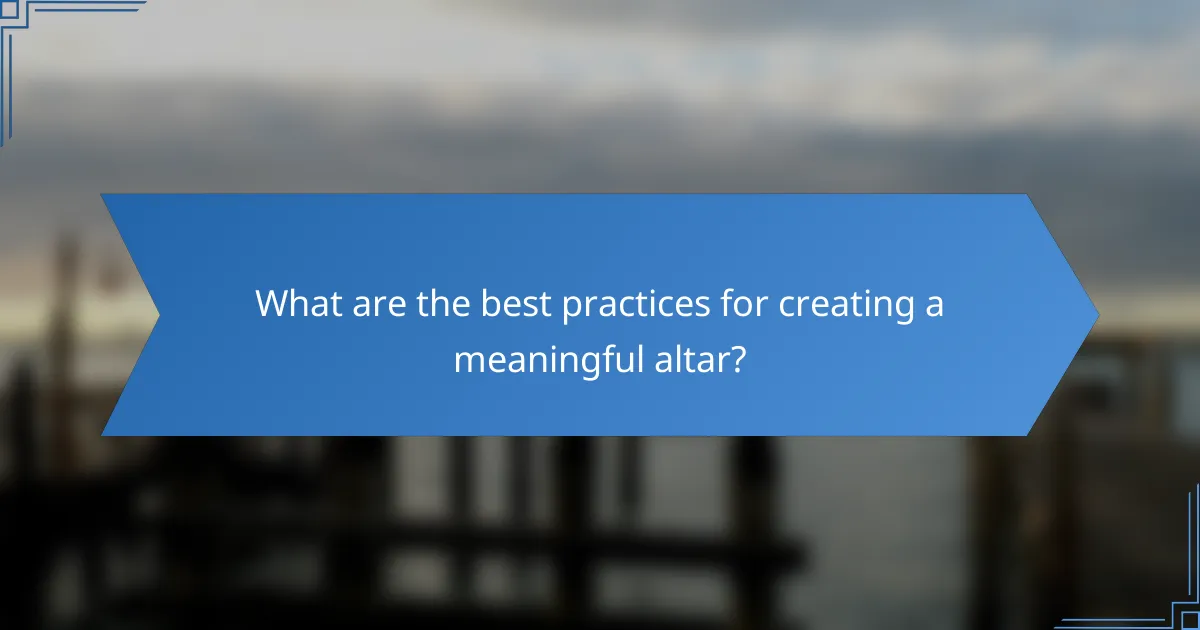
What are the best practices for creating a meaningful altar?
To create a meaningful altar for the Day of the Dead, focus on personalising it with items that honour the deceased. Incorporate photographs, favourite foods, and symbolic objects that reflect their life. Use marigolds and papel picado to enhance the visual appeal and cultural significance. Arrange the altar with care, ensuring it conveys love and remembrance.
How can individuals incorporate personal touches into their altars?
Individuals can incorporate personal touches into their altars by adding meaningful items that reflect their loved ones’ personalities. Personal photographs, favourite foods, and unique mementos can enhance the altar’s significance. Incorporating handmade decorations or traditional crafts also adds a unique attribute, making the altar a true representation of cherished memories. Additionally, using colours and symbols that resonate with personal experiences can create a deeper emotional connection.
What common mistakes should be avoided when setting up an altar?
To avoid common mistakes when setting up an altar for the Day of the Dead, focus on authenticity and respect. Ensure you include personal items that honour the deceased and avoid overcrowding the altar. Use traditional symbols correctly, and remember to incorporate elements like food, flowers, and photographs to create a meaningful tribute.
Which resources can help enhance the altar-building experience?
To enhance the altar-building experience for the Day of the Dead, consider using various resources. These include books on traditional practices, online tutorials, and community workshops. Local cultural centres often provide insights and materials. Additionally, social media platforms can offer inspiration through shared images and ideas. Engaging with these resources fosters creativity and deepens the connection to the cultural significance of the altars.